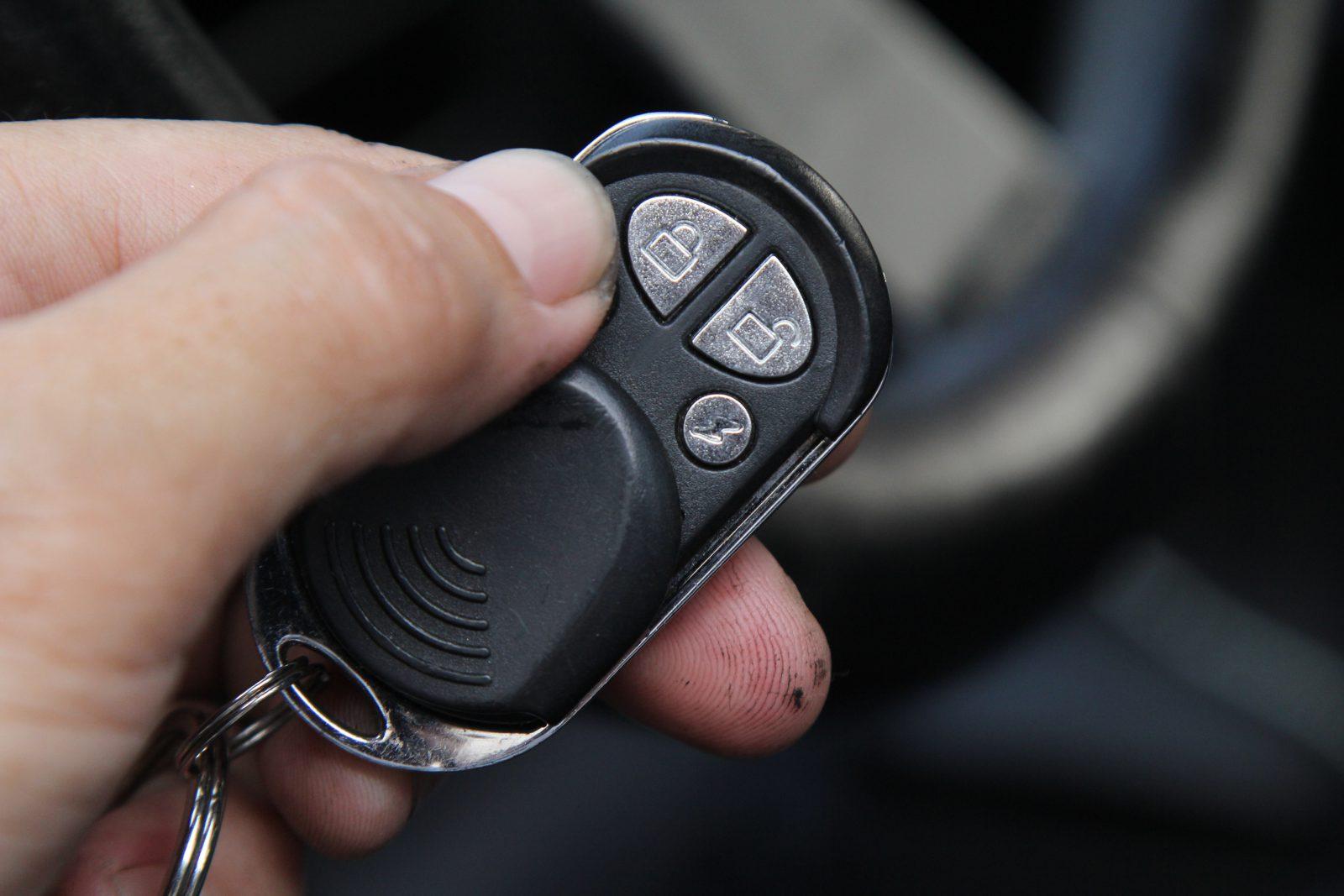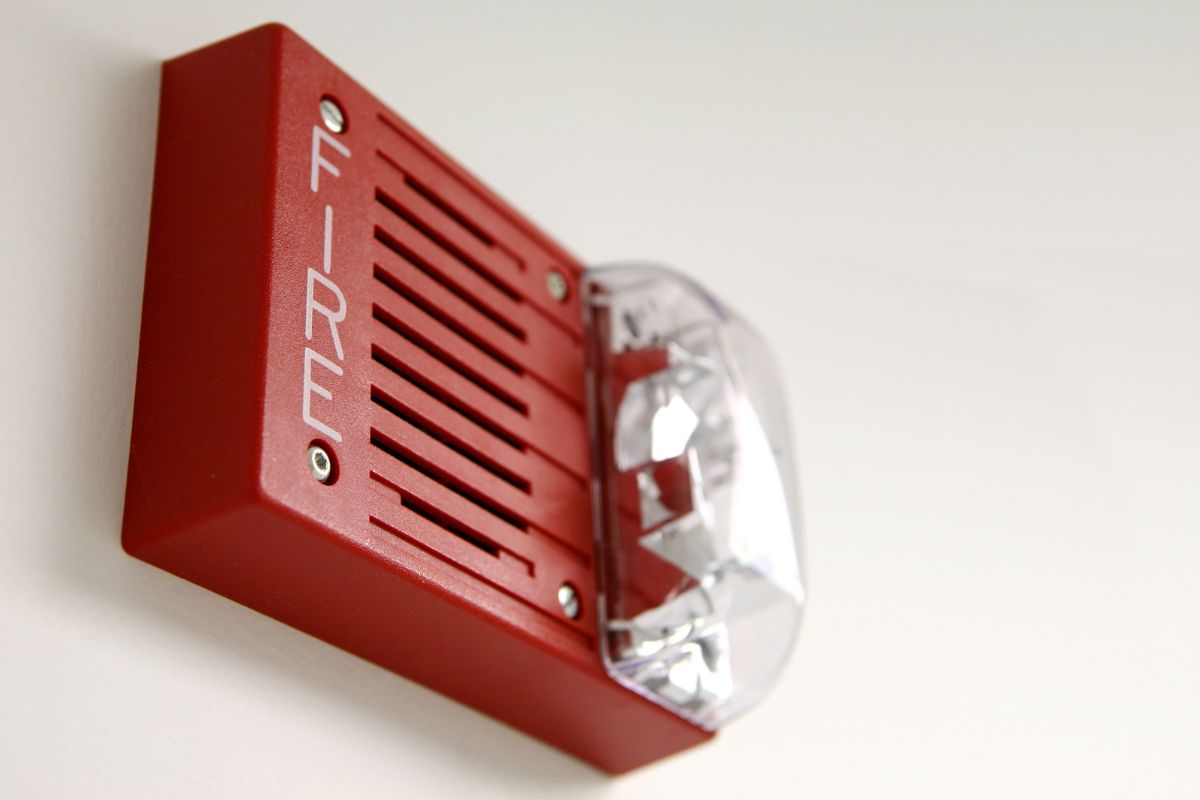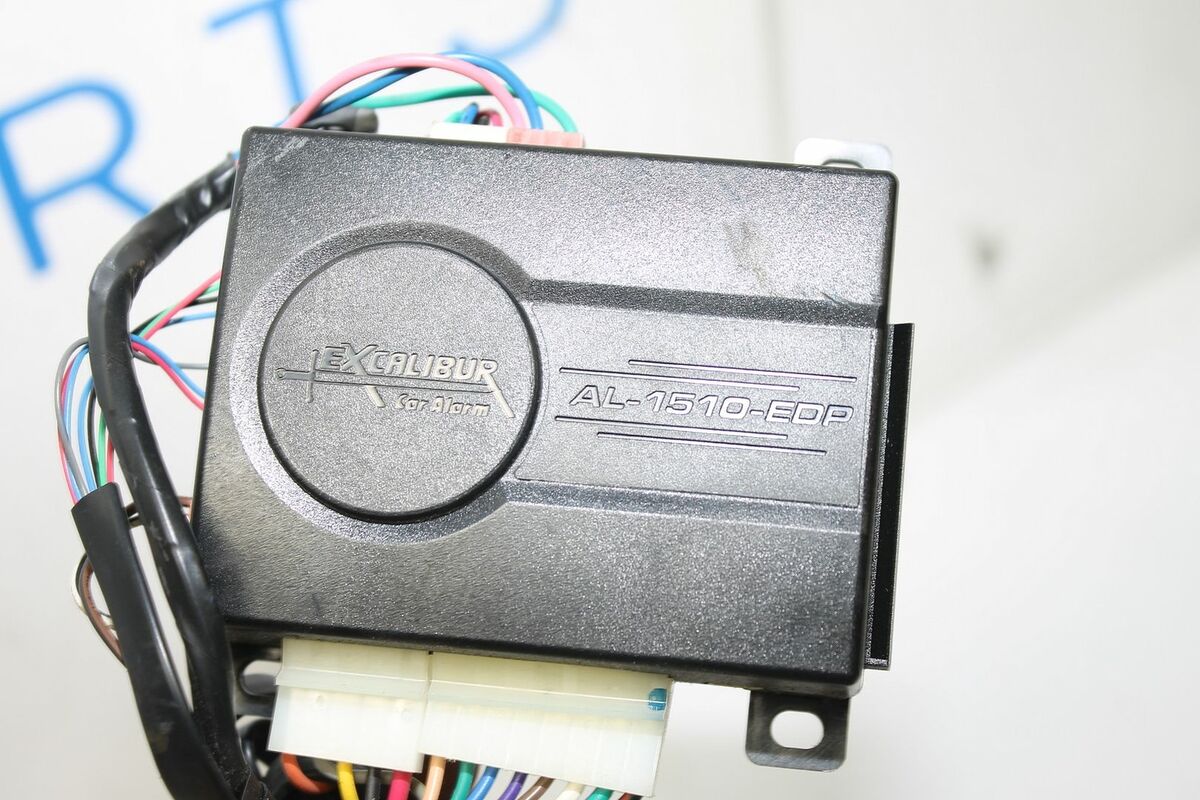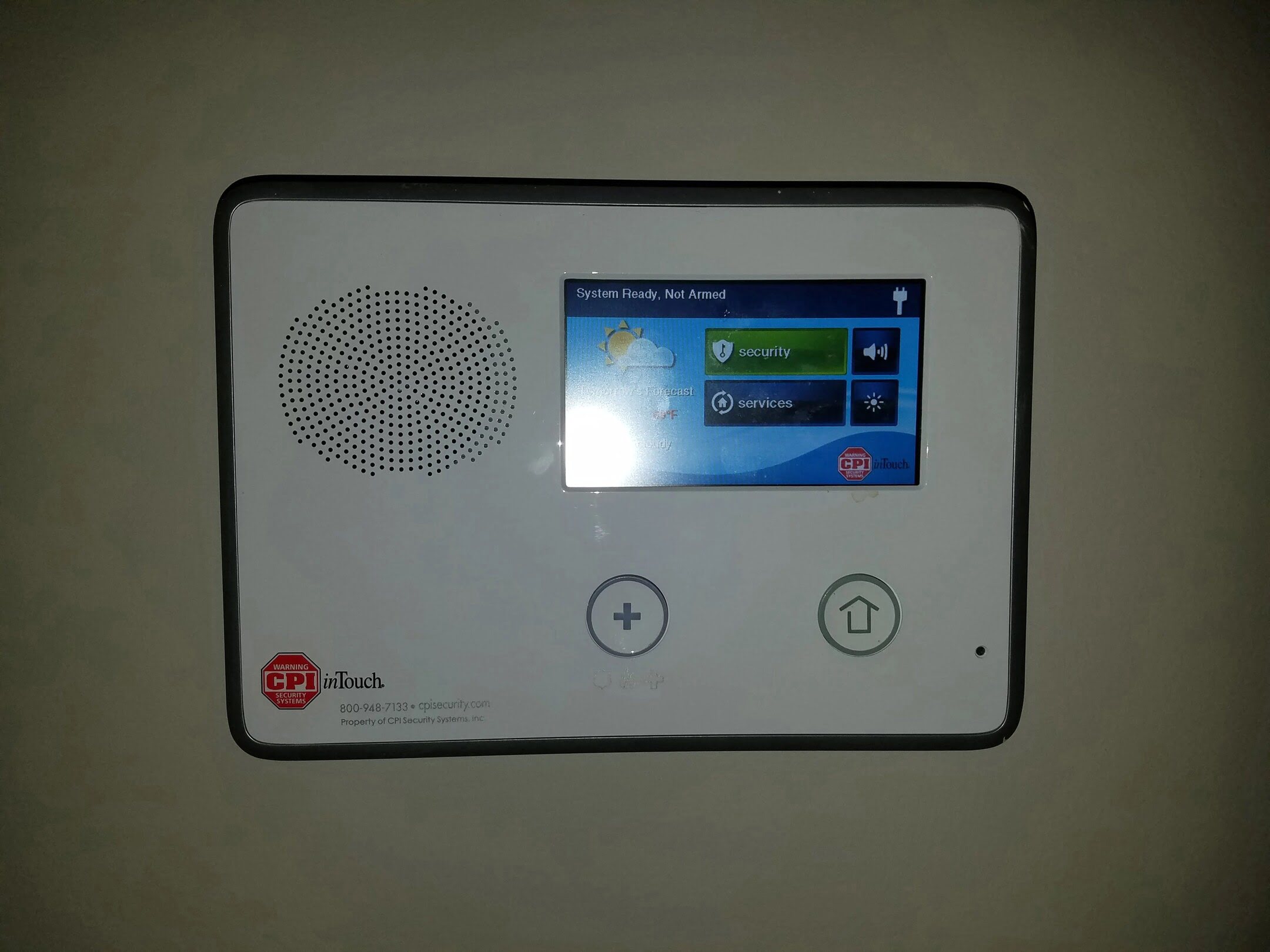Home>Home Security and Surveillance>How To Disable Car Alarm Systems


Home Security and Surveillance
How To Disable Car Alarm Systems
Modified: August 17, 2024
Learn how to disable car alarm systems and protect your home security and surveillance with our step-by-step guide. Safely switch off alarms without triggering any unwanted alerts.
(Many of the links in this article redirect to a specific reviewed product. Your purchase of these products through affiliate links helps to generate commission for Storables.com, at no extra cost. Learn more)
Introduction
Welcome to the world of car alarm systems. Designed to protect your vehicle from theft and unauthorized access, car alarm systems have become an essential component of modern vehicles. These systems are equipped with various sensors and triggers that detect any suspicious activity and sound an alarm, alerting the owner and deterring potential thieves.
While car alarm systems provide valuable security, there may be instances where you need to temporarily disable them. This could be due to false alarms, car repairs, or situations where the alarm system is triggered unintentionally. Disabling the car alarm system can prevent unnecessary noise and ensure a smooth and uninterrupted driving experience.
In this article, we will explore the reasons why you might need to disable your car alarm system and discuss some methods you can use to achieve this. Before we dive into the methods, it’s important to note that disabling car alarm systems should only be done in legal and appropriate circumstances. It is always advisable to consult your vehicle’s user manual or seek professional assistance if you are uncertain about the proper procedure.
Now, let’s delve into the various reasons why you might need to disable your car alarm system.
Key Takeaways:
- Disabling a car alarm system is essential for preventing false alarms, performing repairs, or addressing malfunctions. Always prioritize safety and follow the correct procedures to avoid unintended consequences.
- When in doubt, seek professional help from automotive technicians or car security specialists to safely and effectively disable your car alarm system. Prioritize your safety and the security of your vehicle.
Read more: How To Disable A Burglar Alarm
Reasons to Disable Car Alarm Systems
While car alarm systems are designed to enhance vehicle security, there are several situations where you might consider disabling them temporarily. Let’s explore some common reasons why you might need to turn off your car alarm system:
- False Alarms: Car alarm systems can sometimes be sensitive and trigger false alarms. This could be due to factors such as loud noises, vibrations from passing vehicles, or even environmental conditions. Constant false alarms can be frustrating and disruptive, especially if they occur at inconvenient times or in busy areas.
- Vehicle Repairs: When certain repairs or maintenance tasks need to be performed on your vehicle, it may be necessary to disable the car alarm system. For instance, if you need to disconnect the car battery or work on the electrical system, it’s important to turn off the alarm system to avoid unintended activation.
- Car Battery Replacement: When replacing the car battery, the alarm system may become activated or go into an anti-theft mode. Disabling the alarm system during the battery replacement process ensures that you can perform the task smoothly without any unnecessary interruptions.
- Car Towing: In some cases, you may need to tow your vehicle. If the car alarm system is not disabled before towing, the movement of the vehicle may trigger the alarm, causing unnecessary noise and inconvenience. Therefore, it’s crucial to disable the alarm system before towing your vehicle.
- Malfunctioning Alarm System: While uncommon, car alarm systems can experience malfunctions. If you notice that your alarm system is constantly activating or not functioning as it should, it may be necessary to disable it temporarily until you can have the system inspected or repaired.
Remember, disabling your car alarm system should only be done when necessary and in suitable circumstances. It’s important to prioritize your safety and comply with local laws and regulations regarding vehicle security.
Different Types of Car Alarm Systems
Car alarm systems come in various types, each with its own features and level of security. Understanding the different types of car alarm systems can help you make an informed decision when it comes to disabling or modifying them. Let’s take a look at some common types of car alarm systems:
- Active Car Alarm Systems: Active car alarm systems require the driver to manually activate and deactivate the system using a key fob or a remote control. These systems often have additional features such as panic buttons, remote door lock/unlock, and a valet mode that temporarily disables certain alarm functions.
- Passive Car Alarm Systems: Passive car alarm systems do not require manual activation or deactivation. They automatically arm themselves once the ignition is turned off and the driver exits the vehicle. These systems use proximity sensors to detect any unauthorized entry, movement, or tampering and trigger the alarm accordingly.
- Two-Way Car Alarm Systems: Two-way car alarm systems provide feedback to the driver, indicating whether the alarm has been activated or deactivated. They use a two-way communication system between the key fob or remote control and the main alarm unit. This feedback can be in the form of visual indicators, auditory alerts, or vibration notifications.
- GPS Car Alarm Systems: GPS car alarm systems combine traditional car alarm features with GPS tracking capabilities. These systems can send alerts to the owner’s smartphone or a central monitoring center in the event of unauthorized access or movement of the vehicle. They also allow the owner to track the location of the vehicle in real-time.
- Smartphone-Controlled Car Alarm Systems: With advancements in technology, smartphone-controlled car alarm systems have become increasingly popular. These systems enable the owner to arm, disarm, and control the alarm system using a smartphone app. They also provide additional features such as vehicle status monitoring, remote start, and geofencing.
Keep in mind that the specific features and functionalities of car alarm systems can vary depending on the manufacturer and model of your vehicle. It’s important to consult your vehicle’s user manual or contact the manufacturer for detailed information about the car alarm system installed in your vehicle.
Safety Precautions Before Disabling a Car Alarm System
Before you proceed with disabling your car alarm system, it’s important to take certain safety precautions to ensure a smooth and safe process. These precautions will help protect you, your vehicle, and the alarm system itself. Here are some essential safety measures to keep in mind:
- Consult the Vehicle’s User Manual: Every vehicle has its own specific instructions for disabling the car alarm system. It’s crucial to refer to the vehicle’s user manual to understand the correct procedure and any safety considerations provided by the manufacturer.
- Ensure the Vehicle is in a Safe Location: Before you begin disabling the car alarm system, make sure that the vehicle is parked in a safe and secure location. Choose an area with minimal traffic and away from any potential hazards to ensure your safety while performing the necessary steps.
- Disconnect the Power Source: To avoid any accidental electrical shocks or short circuits, it’s important to disconnect the power source of the car alarm system. This typically involves disconnecting the vehicle’s battery. Refer to the user manual for the specific steps required to disconnect the power source safely.
- Protective Gear: When working with any electrical components, it’s advisable to wear appropriate protective gear such as gloves and safety glasses. This will help protect you from any potential harm and ensure a safe working environment.
- Avoid Damage to the Vehicle: Take care not to damage any wiring or components while disabling the car alarm system. Use the correct tools and follow the recommended procedures to prevent any unintended damage that could impact the vehicle’s electrical system.
- Do Not Tamper with Anti-Theft Systems: While disabling the car alarm system, it’s important to avoid tampering with any anti-theft mechanisms in your vehicle. Disabling or modifying such systems may compromise the security of your vehicle and could lead to unauthorized access or theft.
Remember, if you are unsure about the proper procedure or feel uncomfortable performing the necessary steps yourself, it’s always recommended to seek assistance from a professional mechanic or contact the manufacturer for guidance. Safety should always be the top priority when it comes to working on your vehicle’s electrical systems.
Method 1: Disconnecting the Car Battery
One of the simplest methods to disable a car alarm system is by disconnecting the car battery. This method effectively cuts off power to the alarm system, disabling its functionality. Here’s a step-by-step guide on how to disconnect the car battery:
- Park the Vehicle: Find a safe and flat area to park your vehicle and engage the parking brake to ensure it does not roll or move during the process.
- Gather the Necessary Tools: You will need a wrench or a socket set to loosen and remove the bolts securing the battery terminals.
- Identify the Battery: Locate your vehicle’s battery. It is typically located under the hood, in the engine bay, or sometimes in the trunk.
- Disconnect the Negative Terminal: Locate the negative terminal on the battery, marked with a (-) symbol. Loosen the bolt securing the negative terminal using the wrench or socket set, and carefully remove the negative cable from the battery terminal.
- Disconnect the Positive Terminal: Locate the positive terminal on the battery, marked with a (+) symbol. Repeat the same process, loosening the bolt and removing the positive cable from the battery terminal.
- Wait for a Few Minutes: After disconnecting the battery, it’s recommended to wait for a few minutes before reconnecting it. This allows any residual charge to dissipate and ensures a full reset of the car’s electrical system.
- Reconnect the Battery: To re-enable the car’s electrical system, reverse the process and reconnect the battery terminals. Start with the positive terminal, followed by the negative terminal. Tighten the bolts securely to ensure proper contact.
- Test the Alarm System: After reconnecting the battery, test the alarm system by locking and unlocking the vehicle to confirm that the car alarm is disabled. Take note that some vehicles may have a reactivation process for the alarm system after disconnecting and reconnecting the battery. Refer to the user manual for specific instructions.
It’s important to note that disconnecting the car battery will also reset other settings in your vehicle, such as the clock and radio presets. Additionally, this method may not work for vehicles with integrated alarm systems that are directly connected to the car’s electrical system. In such cases, it’s best to consult the vehicle’s user manual or seek professional assistance.
Remember, always prioritize safety and take necessary precautions when working with a car battery. Avoid short-circuiting the battery or causing any damage to the electrical system.
If you want to disable a car alarm system, you can try unlocking the car with the key or using the remote. If that doesn’t work, you can disconnect the car battery or locate the alarm fuse and remove it. Always consult your car’s manual for specific instructions.
Read more: How To Become An Alarm Systems Dealer
Method 2: Wiring Modifications
Another method to disable a car alarm system is by making wiring modifications. This involves identifying and disconnecting specific wires related to the alarm system, effectively disabling its functionality. Here’s a step-by-step guide on how to disable a car alarm system through wiring modifications:
- Park the Vehicle: Park your vehicle in a safe and flat area, and engage the parking brake to ensure it remains stationary during the process.
- Gather the Necessary Tools: You may need a wiring diagram specific to your vehicle’s make and model, a digital multimeter, wire strippers, electrical tape, and wire connectors.
- Locate the Alarm System Wires: Refer to the wiring diagram to identify the wires associated with the car alarm system. Typically, these wires are connected to the alarm control module, siren, or sensors.
- Disconnect the Power Supply: Locate the power source wire that supplies power to the alarm system. Using the digital multimeter, test the wires for voltage. Once identified, cut and disconnect this wire to disable the power supply to the alarm system.
- Disable the Sensors and Triggers: Identify the wires connected to the various sensors and triggers (such as door sensors or motion sensors) of the car alarm system. Disconnect these wires individually or cut and tape them to prevent activation or false alarms.
- Secure and Insulate the Wiring: After making the necessary modifications, use electrical tape and wire connectors to secure and insulate the exposed wires. This helps prevent any accidental short circuits or damage to the electrical system.
- Test the Alarm System: Once the wiring modifications are complete, test the alarm system by locking and unlocking the vehicle to verify that the alarm is disabled. Keep in mind that some alarm systems may have backup power or memory functions that can retain settings. It’s important to thoroughly test the system to ensure it is effectively disabled.
Please note that wiring modifications should be performed with caution and only if you are confident in your electrical abilities. If you are unsure about any aspect of the process, it is recommended to consult a professional or seek assistance from an automotive technician. Additionally, modifying the wiring of your car alarm system may void your vehicle’s warranty, so it’s important to consider this before proceeding.
Remember to prioritize safety and take appropriate precautions to avoid any damage to the vehicle’s electrical system or unintended consequences.
Method 3: Disabling the Alarm Fuse
If you’re looking for a quick and temporary way to disable a car alarm system, you can consider removing or disabling the alarm fuse. This method involves locating the fuse related to the alarm system and either removing it or disabling its functionality. Here’s a step-by-step guide on how to disable a car alarm system by removing or disabling the alarm fuse:
- Park the Vehicle: Find a safe and level location to park your vehicle and engage the parking brake to ensure it remains stationary.
- Identify the Fuse Box: Locate the fuse box in your vehicle. The fuse box is usually located under the dashboard on the driver’s side, but the exact location may vary depending on the make and model of your vehicle. Refer to the vehicle’s user manual if needed.
- Locate the Alarm Fuse: Look for the fuse responsible for the car alarm system. The fuse box will typically have a diagram or label indicating the purpose of each fuse. Look for terms such as “alarm,” “security,” or “anti-theft.”
- Remove the Alarm Fuse: Use a pair of fuse pullers or needle-nose pliers to carefully remove the alarm fuse from its slot in the fuse box. Be sure to grip the fuse firmly and pull it straight out to avoid damaging the fuse or the surrounding components.
- Disable the Alarm Fuse: If you can’t remove the alarm fuse or don’t want to remove it completely, you can disable the fuse by pulling it partway out or inserting a fuse bypass switch. This will interrupt the circuit and prevent power from reaching the car alarm system.
- Store the Fuse Safely: If you choose to remove the alarm fuse, store it in a safe place within your vehicle so that it can be easily reinserted when you want to reactivate the alarm system.
- Test the Alarm System: Start your vehicle and test the alarm system by locking and unlocking the doors. Verify that the alarm does not activate and that the vehicle functions without any issues. Remember that though the alarm is disabled, other electrical components may operate as usual.
It’s important to note that removing or disabling the alarm fuse may also affect other electrical systems in your vehicle, such as the remote keyless entry or interior lights. Therefore, it’s recommended to consult your vehicle’s user manual or seek professional advice if you are unsure about which fuse to remove or disable.
Additionally, this method may not work for all vehicles, especially those with complex alarm systems integrated into the vehicle’s electrical system. In such cases, it’s best to consult a professional or refer to the vehicle’s user manual for specific instructions on disabling the alarm system.
Finally, please remember to exercise caution and prioritize safety when working with fuses and electrical components in your vehicle.
Method 4: Utilizing a Car Alarm Bypass Module
If you are looking for a more advanced and permanent solution to disable your car alarm system, you can consider utilizing a car alarm bypass module. A bypass module is a device designed to bypass or deactivate the car alarm system without compromising the functionality of other electrical systems in your vehicle. Here’s a step-by-step guide on how to disable a car alarm system using a bypass module:
- Research and Purchase the Correct Bypass Module: Start by researching and identifying the appropriate bypass module for your make and model of vehicle. There are different bypass modules available on the market, so ensure you select one that is compatible with your car’s alarm system.
- Read the Installation Instructions: Carefully read the installation instructions provided with the bypass module. Familiarize yourself with the steps and any specific requirements for your particular vehicle. It’s important to have a clear understanding of the process before attempting the installation.
- Disconnect the Battery: As a safety precaution, disconnect your vehicle’s battery to prevent any electrical mishaps while installing the bypass module. Remove the negative (black) terminal from the battery to cut off power to the vehicle’s electrical system.
- Locate the Car Alarm Wiring Harness: Locate the wiring harness of your car’s alarm system. This is typically found near the vehicle’s steering column or fuse box. Use the wiring diagram provided with the bypass module to identify the necessary wires.
- Connect the Bypass Module: Connect the bypass module to the car alarm system’s wiring harness following the instructions provided. This often involves splicing or connecting specific wires as directed by the bypass module’s installation guide. Ensure that all connections are secure and insulated properly to prevent any short circuits.
- Secure and Test the Bypass Module: Once the connections are made, secure the bypass module in a safe and stable location within the vehicle. Reconnect the negative battery terminal and test the car’s electrical systems as well as the remote keyless entry functionality to ensure everything is functioning properly.
- Activate the Bypass Module: Follow the specific instructions provided by the bypass module manufacturer to activate and program the bypass module. This step ensures that the module effectively bypasses the car alarm system, allowing you to start and operate the vehicle without triggering the alarm.
It’s important to note that installing a bypass module may require advanced knowledge of vehicle wiring and electronics. If you are not confident in your abilities or are unfamiliar with this type of installation, it’s best to consult a professional installer or a specialized car security technician.
Utilizing a bypass module offers a more seamless and permanent solution to disable the car alarm system, ensuring that other electrical systems in your vehicle remain fully functional while the alarm system is bypassed.
Method 5: Seeking Professional Help
If you’re unsure about how to disable your car alarm system or if you simply prefer to have the job done by a trained professional, seeking professional help is a reliable and safe option. Automotive technicians and car security specialists have the knowledge and expertise to disable or modify car alarm systems effectively. Here’s how you can seek professional assistance to disable your car alarm system:
- Research and Find a Reputable Professional: Start by researching and identifying reputable automotive technicians or car security specialists in your area. Look for professionals who have experience working with your vehicle’s make and model or specialize in car alarm systems.
- Read Reviews and Recommendations: Check online reviews, ask for recommendations from friends or family, or seek advice from local car enthusiasts to find professionals who have a track record of providing quality service and expertise in disabling car alarms.
- Contact and Consult the Professional: Reach out to the chosen professionals and explain your situation. Provide as much detail as possible about your car alarm system, any issues you are experiencing, and your specific requirements, such as complete disablement or temporary deactivation.
- Schedule an Appointment: Once you have chosen a professional, schedule an appointment to bring your vehicle in for inspection and disablement of the car alarm system. Be prepared to pay for their services, as disabling or modifying a car alarm system may require specialized tools, equipment, and expertise.
- Discuss and Understand the Process: During the appointment, discuss the process with the professional and ensure you have a clear understanding of what they will be doing to disable the car alarm system. Ask any questions you may have and make sure you are comfortable with the procedure and the potential effects on other electrical systems in your vehicle.
- Follow the Professional’s Advice: After the car alarm system is disabled, the professional may provide you with recommendations for any additional security measures or precautions to take. Follow their advice to ensure the continued safety and security of your vehicle.
Seeking professional help ensures that the car alarm system is properly disabled or modified by experienced technicians who have the necessary knowledge and tools. They can provide expert guidance, minimize the risk of unintended consequences, and offer additional security recommendations if needed.
Remember, when seeking professional help, it’s essential to choose a reputable and trusted professional who specializes in car alarm systems and has a proven track record of delivering quality service.
Read more: How Many Alarm Systems In The Usa
Conclusion
Disabling a car alarm system can be necessary in certain situations to prevent false alarms, perform repairs, or address malfunctions. While there are several methods to disable a car alarm system, it’s important to prioritize safety and follow the correct procedures to avoid any unintended consequences. Let’s recap the methods discussed:
- Disconnecting the Car Battery: This method involves disconnecting the car battery to cut off power to the alarm system temporarily. It is a simple and temporary solution.
- Wiring Modifications: By identifying and modifying specific alarm system wires, you can disable the alarm system’s functionality. This method requires knowledge of your vehicle’s wiring and should be done with caution.
- Disabling the Alarm Fuse: Removing or disabling the alarm fuse interrupts the alarm system’s power supply. It’s an easily reversible solution, but it may affect other electrical systems in your vehicle.
- Utilizing a Car Alarm Bypass Module: Installing a bypass module offers a comprehensive and permanent solution, allowing you to bypass the car alarm system while maintaining the functionality of other electrical systems in your vehicle.
- Seeking Professional Help: When in doubt or if you prefer a professional touch, seeking assistance from automotive technicians or car security specialists is a reliable option for disabling your car alarm system safely and effectively.
Before attempting any method, always refer to your vehicle’s user manual and follow any manufacturer recommendations. Consider your comfort level and the complexity of the alarm system before deciding which method to use.
Remember, disabling a car alarm system should only be done in appropriate circumstances and in compliance with local laws and regulations. Car alarms play a crucial role in vehicle security, and it’s important to ensure that your vehicle remains protected against theft and unauthorized access.
If you are uncertain about the procedure or have any doubts, it’s recommended to seek assistance from professionals who have the knowledge and experience to disable car alarm systems effectively.
By exercising caution and following the appropriate methods, you can disable your car alarm system when necessary, providing peace of mind and convenience in various situations while keeping your vehicle and belongings safe.
Frequently Asked Questions about How To Disable Car Alarm Systems
Was this page helpful?
At Storables.com, we guarantee accurate and reliable information. Our content, validated by Expert Board Contributors, is crafted following stringent Editorial Policies. We're committed to providing you with well-researched, expert-backed insights for all your informational needs.













